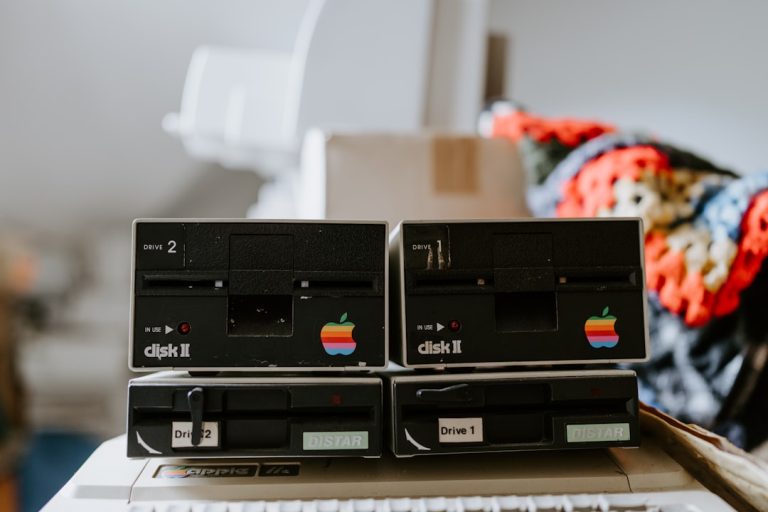
Understanding your potential is a multifaceted journey that requires introspection and a willingness to explore the depths of your capabilities. It begins with recognizing that potential is not a fixed attribute; rather, it is a dynamic quality that can evolve over time. Each individual possesses unique talents, skills, and experiences that contribute to their potential.
To truly grasp this concept, one must engage in self-reflection, asking probing questions about personal aspirations, interests, and the areas where one feels most energized. This process often involves looking back at past experiences to identify moments of success and fulfillment, which can serve as indicators of where one’s true potential lies. Moreover, understanding your potential also involves acknowledging the external factors that can influence it.
These factors include the environment in which you operate, the resources available to you, and the support systems that can either bolster or hinder your growth. For instance, a nurturing environment that encourages exploration and creativity can significantly enhance an individual’s potential. Conversely, a restrictive or negative atmosphere may stifle growth and lead to self-doubt.
By recognizing these influences, individuals can better navigate their paths and make informed decisions about how to harness their potential effectively.
Key Takeaways
- Understanding your potential is the first step towards personal growth and success.
- Identifying your strengths and weaknesses allows you to leverage your strengths and work on improving your weaknesses.
- Setting realistic goals helps you stay focused and motivated on your journey towards success.
- Overcoming self-limiting beliefs is crucial for unlocking your full potential and achieving your goals.
- Seeking support and mentorship from others can provide valuable guidance and encouragement on your path to success.
- Embracing challenges and taking risks is essential for personal growth and achieving your full potential.
- Cultivating a growth mindset enables you to see setbacks as opportunities for learning and growth.
- Celebrating your achievements, no matter how small, is important for maintaining motivation and confidence in your abilities.
Identifying Your Strengths and Weaknesses
The process of identifying strengths and weaknesses is crucial for personal development and achieving one’s potential. Strengths are the attributes that enable individuals to excel in certain areas, while weaknesses are aspects that may require improvement or management. To effectively identify these traits, one can utilize various methods such as self-assessment tools, feedback from peers, or even professional evaluations.
For example, personality assessments like the Myers-Briggs Type Indicator or the StrengthsFinder can provide valuable insights into one’s inherent strengths and preferred working styles. In addition to formal assessments, engaging in honest self-reflection is essential. This involves taking the time to consider past experiences where you felt particularly competent or challenged.
Reflecting on these moments can reveal patterns that highlight your strengths—such as problem-solving abilities, creativity, or interpersonal skills—as well as areas where you may struggle, such as time management or public speaking. By gaining clarity on these aspects, individuals can create a more tailored approach to personal development, focusing on leveraging strengths while addressing weaknesses through targeted strategies.
Setting Realistic Goals

Setting realistic goals is a fundamental step in the journey toward realizing one’s potential. Goals serve as a roadmap, guiding individuals toward their desired outcomes while providing motivation and direction. However, it is essential that these goals are not only ambitious but also achievable within a specified timeframe.
The SMART criteria—Specific, Measurable, Achievable, Relevant, and Time-bound—can be an effective framework for goal-setting. For instance, instead of setting a vague goal like “I want to be fit,” a more realistic goal would be “I will exercise for 30 minutes five times a week for the next three months.” Additionally, breaking down larger goals into smaller, manageable tasks can enhance the likelihood of success. This approach allows individuals to celebrate small victories along the way, which can boost motivation and reinforce commitment to the overall objective.
For example, if someone aims to write a book, they might set a goal to write 500 words each day rather than focusing solely on completing the entire manuscript. This incremental progress not only makes the goal feel less daunting but also fosters a sense of accomplishment as each milestone is reached.
Overcoming Self-Limiting Beliefs
| Metrics | Results |
|---|---|
| Number of self-limiting beliefs identified | 25 |
| Percentage of self-limiting beliefs overcome | 80% |
| Time spent on self-reflection and challenging beliefs | 30 minutes daily |
| Number of positive affirmations practiced | 50 per day |
Self-limiting beliefs are often the invisible barriers that prevent individuals from reaching their full potential. These beliefs are deeply ingrained thoughts that suggest one is incapable of achieving certain goals or deserving of success. Common examples include thoughts like “I’m not good enough,” “I don’t have what it takes,” or “Success is for others, not me.” Overcoming these beliefs requires a conscious effort to challenge and reframe them.
One effective strategy is cognitive restructuring, which involves identifying negative thought patterns and replacing them with more empowering affirmations. For instance, if someone believes they are not skilled enough to pursue a promotion at work, they might reframe this belief by acknowledging their past achievements and the skills they possess that qualify them for the role. Engaging in positive self-talk and surrounding oneself with supportive individuals can further reinforce this shift in mindset.
Additionally, seeking professional help through therapy or coaching can provide valuable tools for dismantling these limiting beliefs and fostering a more positive self-image.
Seeking Support and Mentorship
The journey toward realizing one’s potential is rarely undertaken alone; seeking support and mentorship can significantly enhance this process. Mentors provide guidance based on their own experiences and can offer valuable insights into navigating challenges and seizing opportunities. A mentor’s role is not only to share knowledge but also to inspire and motivate individuals to push beyond their perceived limits.
For example, someone aspiring to advance in their career might seek out a mentor who has successfully navigated similar paths and can provide advice on skill development and networking. In addition to mentorship, building a support network of peers can create an environment conducive to growth. This network can consist of friends, colleagues, or community members who share similar goals or interests.
Engaging with this group allows for the exchange of ideas, encouragement during setbacks, and celebration of successes. The collective energy of a supportive community can be incredibly empowering, reinforcing the belief that one is not alone in their journey toward achieving their potential.
Embracing Challenges and Taking Risks

Embracing challenges and taking risks are integral components of personal growth and development. Stepping outside of one’s comfort zone often leads to new experiences that foster learning and resilience. Challenges can take many forms—whether it’s tackling a difficult project at work, pursuing a new hobby, or engaging in public speaking—each presents an opportunity for growth.
For instance, someone who fears public speaking might choose to join a local Toastmasters club to practice their skills in a supportive environment.
Taking risks is closely tied to embracing challenges; it involves making choices that may lead to uncertain outcomes but have the potential for significant rewards.
The fear of failure often holds individuals back from pursuing opportunities that could lead to personal or professional advancement. However, reframing failure as a learning experience can shift this perspective. For example, an entrepreneur who faces setbacks in launching a new product can view these challenges as valuable lessons that inform future endeavors rather than as definitive proof of inadequacy.
Cultivating a Growth Mindset
Cultivating a growth mindset is essential for unlocking one’s potential and fostering resilience in the face of challenges. Coined by psychologist Carol Dweck, the concept of a growth mindset emphasizes the belief that abilities and intelligence can be developed through dedication and hard work. Individuals with a growth mindset view challenges as opportunities for learning rather than insurmountable obstacles.
This perspective encourages experimentation and persistence in pursuing goals. To cultivate a growth mindset, individuals can start by embracing curiosity and seeking out new experiences that push their boundaries. This might involve taking on new responsibilities at work or exploring unfamiliar subjects through online courses or workshops.
Additionally, reflecting on past experiences where effort led to improvement can reinforce this mindset. For instance, someone who struggled with math in school but later excelled through practice and tutoring can recognize that their abilities were not fixed but rather developed over time through perseverance.
Celebrating Your Achievements
Celebrating achievements is an often-overlooked aspect of personal development that plays a crucial role in maintaining motivation and reinforcing positive behaviors. Acknowledging both small victories and significant milestones fosters a sense of accomplishment and encourages continued effort toward future goals. Celebrations do not need to be grand; they can be as simple as taking time to reflect on what has been achieved or sharing successes with friends or family.
Moreover, documenting achievements in a journal or through visual reminders can serve as powerful motivators during challenging times. For instance, creating a vision board that highlights past accomplishments alongside future aspirations can provide inspiration when faced with setbacks. By regularly celebrating achievements—no matter how small—individuals cultivate a positive feedback loop that reinforces their commitment to personal growth and encourages them to continue striving toward their potential.
If you’re interested in learning more about audience engagement, you may want to check out this article on how to effectively engage your audience. This article provides valuable insights and tips on how to connect with your audience and keep them interested in your content. By implementing some of the strategies outlined in the article, you can improve your audience engagement and build a loyal following for your brand.
FAQs
What is audience engagement?
Audience engagement refers to the level of involvement, interaction, and connection that an audience has with a particular content, brand, or event. It measures how much the audience is actively participating and responding to the content or message being presented.
Why is audience engagement important?
Audience engagement is important because it helps to build a loyal and dedicated audience, increases brand awareness, and drives business growth. It also allows for valuable feedback and insights from the audience, which can be used to improve products, services, and content.
What are some strategies for increasing audience engagement?
Some strategies for increasing audience engagement include creating interactive content, encouraging audience participation through polls, surveys, and contests, responding to audience comments and feedback, and utilizing social media platforms to connect with the audience.
How can audience engagement be measured?
Audience engagement can be measured through various metrics such as likes, shares, comments, click-through rates, time spent on a website or content, and conversion rates. These metrics help to gauge the level of audience interaction and interest.
What are the benefits of high audience engagement?
High audience engagement can lead to increased brand loyalty, improved customer satisfaction, higher conversion rates, and a stronger online presence. It also helps to build a community around a brand or content, leading to long-term success.


